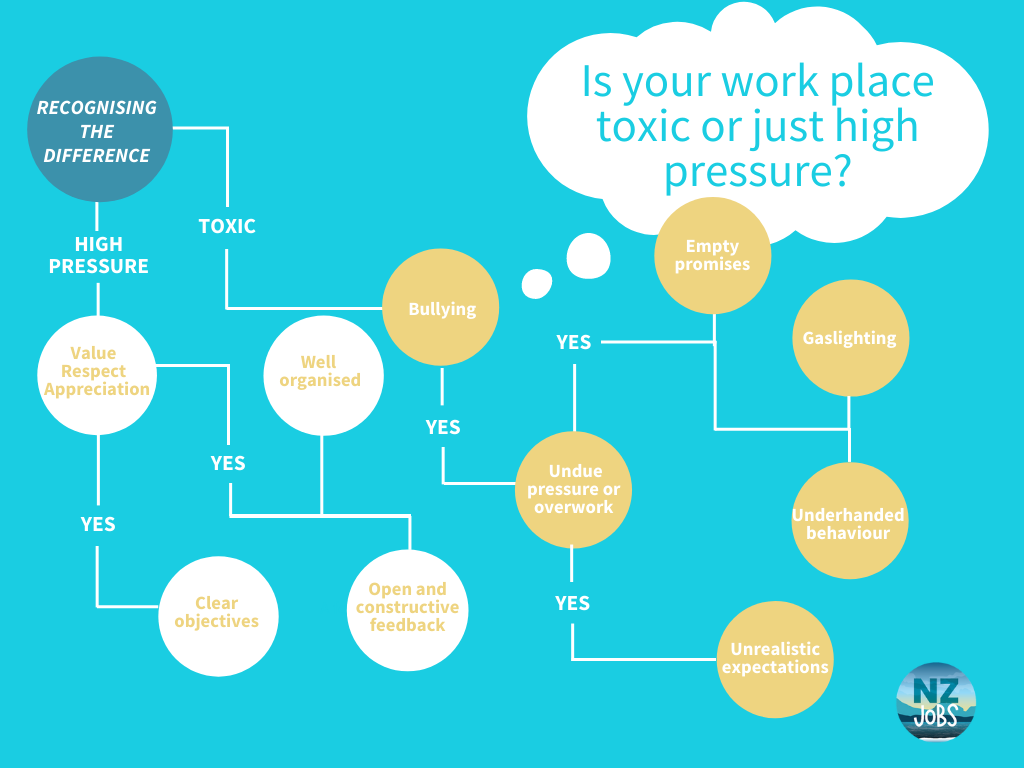In today's fast-paced and competitive work environment, it's essential to distinguish between high-pressure and toxic work environments. While the two might share some similarities, understanding the differences is crucial for maintaining a healthy and productive workforce.
High-Pressure Work Environments
High-pressure work environments are characterized by the need to consistently perform at a high level under demanding circumstances. These environments can have varying effects on individuals and teams. Some people thrive in high-pressure situations, where the adrenaline rush can boost focus and drive, leading to excellent results. Others, however, may struggle in such settings.
The defining feature of high-pressure environments is that the pressure is generally constructive and purpose-driven. The aim is to achieve specific goals, meet deadlines, and produce high-quality work. It's not about creating chaos or undue stress but rather about pushing individuals and teams to excel. High-pressure environments often operate with a sense of urgency and a commitment to excellence, making them challenging but not necessarily toxic.
Toxic Work Environments
Toxic work environments, on the other hand, are detrimental to individuals, teams, and organizations as a whole. They are characterized by unhealthy dynamics, disrespect, and a lack of appreciation. In a toxic workplace, individuals may experience bullying, gaslighting, or manipulation, making it a stressful and emotionally draining place to work.
The fundamental difference between high-pressure and toxic work environments lies in their impact on well-being and productivity. High-pressure environments, when managed effectively, can enhance performance and lead to personal growth. In contrast, toxic workplaces erode trust, create fear, and hinder employee engagement. They are typically characterized by unclear objectives, disorganization, and a lack of open and constructive feedback.

Key Differentiators
To help people recognize the difference, we conducted qualitative research, and some common themes emerged:
1. Value, Respect, Appreciation
In a productive environment, expressions of value and appreciation, even simple ones like a thank you, contribute to a positive atmosphere. Studies in positive psychology suggest that gratitude enhances well-being and fosters a productive work environment.
2. Clear Objectives
Clear objectives provide direction and motivation for both individuals and teams. They allow employees to understand their role and purpose, enabling them to be more focused and engaged.
3. Well-Organized
Organized workplaces are more efficient and reduce stress. Clear roles, well-defined procedures, and accountability promote a positive and productive organization.
4. Open and Constructive Feedback
Feedback is essential for improvement. However, there's a stark contrast between constructive feedback and bullying. The manner in which feedback is delivered affects both individual development and organizational productivity.
5. Trust
Trust is a foundation for a productive organization. Empty promises, secretive behaviour, or dishonesty undermine trust, leading to disengagement and lack of commitment.
6. Expectations
High-pressure environments set challenging but realistic goals. Unrealistic expectations, overwork, and undue pressure are more characteristic of toxic workplaces due to poor communication, leadership, and inadequate resources.
In Summary
Leadership and workplace culture play pivotal roles in defining the work environment. While employees may not have the power to change the organization's culture significantly, they can take proactive steps to avoid toxic work environments. Understanding the distinctions between high-pressure and toxic workplaces empowers individuals to make informed decisions about their career paths, fostering healthier and more fulfilling professional lives.
